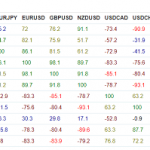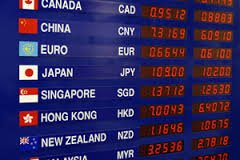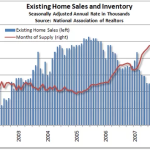- Fears of a second wave of contagion dominate sentiment earlier in the week
- USD/MXN is consolidating the correction thanks to the demand for safe-haven assets
After Thursday’s blow to the Mexican peso along with other emerging currencies, risk appetite returned to end the week as two-thirds of Thursday’s losses recovered on Friday, leaving USD/MXN only 3.6% higher in a week dominated by the Fed’s grim recession warning, as Covid-19 cases re-emerge worldwide.
But this week begins with complications for the Mexican peso, which has fallen 2.5% against the US dollar since Friday’s close. Added to the weakness of the peso is the drop in oil prices, with a 4.5% drop in US crude since the start of the new week, as a surprising increase in US inventories gave another blow to the commodity, which has lost $5 a barrel from last week’s highs.
The dollar reemerged as a safe haven when the Federal Reserve said Wednesday that the impact of the coronavirus will be felt for years and would lead to a 6.5% contraction in the US economy in 2020, nothing we didn’t already know. But markets had already been in the overbought territory for a while, supported by hopes of a quick recovery once virus cases were under control, and a dose of reality was all it took to scare investors into move their capital.
Bond yields, which had rebounded slightly in June, fell again to monthly lows as investors demanded a haven from high-yield risky assets. Given this behavior, the path ahead seems difficult for risky assets, as markets can continue to rise despite the lack of fundamental support, and any economic warning can be taken as a catalyst for the next move driven by feeling. Further corrections can be expected, but buyer support appears to be holding steady for now, limiting sustained depreciation in the near horizon.
On the Mexican side, shares fell nearly 4% on Thursday, following the Wall Street slump, due to concerns about a second wave of infections. The dire economic data released in April could have marked the bottom, but the expectation of further negative readings will pressure Mexican policy makers to add more stimulus to the economy, possibly adding some more support for the peso in the short term.
Bank of Japan Monetary Policy Announcement
It has been private equity investments that have saved the Japanese economy from misery. In recent weeks we have seen increasing interest in the Japanese private index, which has led to a revision of its first quarter GDP.
However, in general, everything remains the same and nothing has changed. Second quarter GDP is expected to experience yet another contraction, possibly much larger than in the previous quarter. This is mainly due to the enormous burden that the economy has suffered as a consequence of the coronavirus. The decline in external demand is not going to help either.
The Bank of Japan (BoJ) is expected to continue supporting the markets and economic growth of the country with a very flexible monetary policy. As always, expectations point to more stimuli, although the institution is most likely to be reluctant to deepen them and to balance the situation with a moderate monetary policy.
Will the Bank of Japan launch another missile?
US underlying retail sales data
The US unemployment figure was expected to hit 19%, although rumors were circulating in the markets that the figure would be 20%, or more. However, this month’s unemployment data confirmed that the US economy created jobs, and unemployment figures fell to 13.4%.
Consumer spending is highly dependent on the employment situation. If consumers trust that they will return to the job market or keep their jobs, this drives them to save less and spend more.
Perhaps there is no better data than the retail sales figures, which provide a good indication of consumer confidence and mood. Good figures are likely to drive operators to take more risks. However, if retail sales are not very encouraging, the recovery of the US economy will be in doubt.
How will traders react to US retail sales figures?
Official interest rate of the BoE
The Bank of England (BoE) is not being pressured to further cut interest rates. For now, it is his fiscal policy that has undergone a profound reform. However, this does not mean that the institution can rest on its laurels. Lack of progress on the Brexit front is likely to keep the BoE on alert.
Despite everything, the pound sterling has shown tremendous strength against the dollar, although this is mainly due to the weakness of the US currency. Especially interesting is the evolution of the price of the pound sterling against the euro. At the moment, the pound is falling.
The pound sterling could strengthen if the central bank indicates that it is not interested in changing interest rates. However, this would be contradictory to what the institution previously stated: that it was considering this option.
How will the interest rate decision affect the pound sterling?
The information to prepare this market review was provided by the Avatrade broker.





